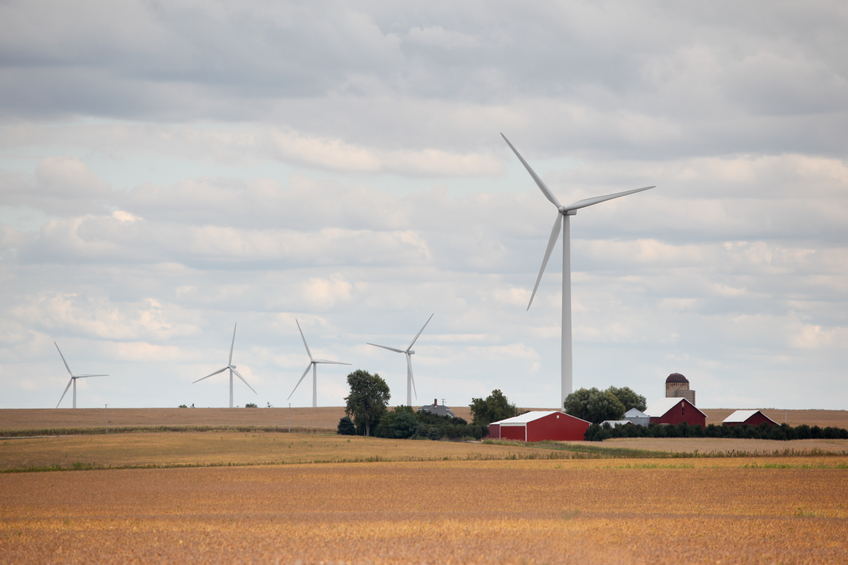While developing a national consensus on climate change policies and the reduction of carbon dioxide (CO2) and other greenhouse gases (GHG) has been elusive, to say the least, several entities have been independently tackling the issue. From the U.S. Senate to municipal power systems – and several levels in between – a climate change policy is developing ad hoc between various government levels, utilities and other private sector entities.
While policies with a national focus are a ways from being put in place, wind generation could be a beneficiary. Project developments are being encouraged, and those yet to be proposed are seen as viable mitigation strategies to meet any future caps on CO2 emissions.
An amendment to mandate emissions reductions failed during U.S. Senate consideration of the Energy Policy Act of 2005, but a separate resolution gave the issue some momentum at the federal level.
Last year, the U.S. Senate passed a ‘sense of the Senate’ resolution that says, in part, that Congress ‘should enact a comprehensive and effective national program of mandatory, market-based limits and incentives on emissions of greenhouse gases that slow, stop, and reverse the growth of such emissions.’
A white paper on the subject was released in March to discuss elements of an eventual market design of any trading regimen. In April, the Senate Energy Committee, headed by Sen. Pete Domenici, R-N.M., and Sen. Jeff Bingaman, D-N.M., took its first step by holding a day-long hearing to discuss any potential mandatory trading program.
Also, utilities across the country have promised to reduce emissions over the next several years. Some of these reductions are by percentages that are in the double digits, and many are intended to be in place early in the next decade.
‘Credible science shows us we must address the growth of carbon emissions in a comprehensive way,’ says Jeff Sterba, chairman, president and chief executive officer of PNM Resources, a New Mexico-based energy holding company.
‘While voluntary efforts have been and continue to be critical, I believe it is time to consider how to design a mandatory policy that addresses all sectors of the economy and focuses on technology development as the best way to protect our environment and standard of living into the future.’
Windlogics
He says the growing body of scientific evidence linking increasing atmospheric concentrations of GHG emissions to warming of the earth's temperature is compelling. PNM has conducted a company-wide inventory of GHG emissions from its operations, and has taken several steps to reduce CO2 and other emissions, including the purchase of all of the energy generated by a 200-MW wind farm in eastern New Mexico.
Whether renewables like wind energy will be recognized for their value in a carbon-regulated market depends on how the rules are implemented.
But how offset projects are evaluated, qualified and regulated is a concern for groups like the Regional Greenhouse Gas Initiative (RGGI) – a cooperative effort by seven Northeast and Mid-Atlantic states. RGGI is holding its own discussions for the design of a regional cap-and-trade program initially covering CO2 emissions from power plants in the region.
California, as one of the world's largest GHG emitters, saw Gov. Arnold Schwarzenegger last year sign an executive order calling for a reduction of those emissions to 2000 levels by 2010. The effort has drawn the support of at least 50 companies.
Also, the California Climate Action Registry, a volunteer organization, has been created to track, report and certify GHG emissions.
‘We are confident that the statewide registry will serve to keep our customers and others informed of our progress in stemming greenhouse gas emissions – a part of our overall mission to protect the environment,’ says Larry Owens, division manager of customer services for Silicon Valley Power (SVP). ‘As an avid supporter of renewable energy, we also offer our customers many opportunities to be environmentally proactive.’
Santa Clara Green Power, SVP's program that supports 100% clean wind and solar power, has a nearly 5% participation rate.
Even without U.S. approval of the Kyoto Protocol, which jump-started emerging GHG markets in other countries, many believe the U.S. will participate in some fashion (probably through the Chicago Climate Exchange and the Environmental Protection Agency's Climate Leaders cap-and-trade programs that exist for other pollutants).
‘While the U.S. is not a participant in the Kyoto trading scheme, it will eventually be part of some other global market,’ says Bjorn Fischer, business manager for The Climate Trust in Portland, Ore. ‘We believe the U.S. will soon be the host of the largest emission trading market in the world, and that market will include project-based offsets.’



